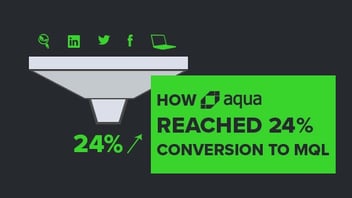
This is Why Your SEO Efforts Aren't Paying Off
Reading time: 7 mins, to really get it
Despite the never ending changes to the marketing landscape, SEO for startups has remained a critical content discovery channel. But understanding the benefits of getting a steady stream of free traffic that converts itself through your funnel is one thing, and implementing it… Well, implementing it sometimes feels insurmountable. SEO has many aspects to it, and most startups just don’t have the necessary time to invest in it. Thankfully, you don’t really need to do it all.
All you need to do is follow the steps in this guide, and you’ll be able to build a strong foundation that will make business development a whole lot easier as you gradually improve your organic ranking.
Part 1:
Set the stage for organic ranking with strategic keyword planning. The first step to a great SEO strategy is research.
Step #1: Verify that Your Keywords Highlight Your USP
According to HubSpot, keyword relevance needs to be your #1 priority, or you’ll be wasting your content planning and development time driving traffic that won’t bring you results.
Just like any other strategy, before you get started with SEO, you need to figure out your buyer persona, so you can tailor your efforts to her needs.
Moz recommends considering whether people who search for your chosen keywords will “be happy with what they find” on your website. It recommends asking yourself, “Will this traffic result in financial rewards or other organizational goals?”
Step #2: Analyze Which Keywords Will Be Easier to Rank for
WordStream, which gets 70% of its traffic organically, explains that “keywords with higher [search] volumes mean more potential exposure… but will likely be much more competitive… [and] you’ll probably be going up against well-established publishers and sites… If you’re a brand-new website, you may want to begin by targeting low-volume, low-competition keywords as a starting point to establish some domain authority.”
Step #3: Analyze Your Competitors’ SEO and Organic Ranking
Use tools like SEMrush and AdWords Keyword Planner to figure out which keywords your competitors already rank for and how high they rank for them. Compare competitors among themselves to see how many of them rank high for desired keywords, to figure out if there’s space for you to stand out.
Step #4: Compare Your Company’s Chosen Keywords with Competitors’
Analyze search volume and competition level for your keywords versus competitors’ keywords, but also analyze keyword relevance and quality of content. If only one direct competitor is on page 1 of Google with a desired keyword, and their content is outdated and doesn’t deliver much value, you might have an opportunity to outrank it.
Part 2:
Choose a group of keywords that will lead your content planning. Now that you’ve made your analysis, it’s time to make decisions.
Step #5: Make Keyword Decisions Based on Search Intent
Choose a group of keywords you will consistently use throughout your website and blog posts, and stick to them. In addition, Search Engine Land recommends you divide your keywords by search intent and sub-target audiences. For example, if you sell cloud computing software, Search Engine Land suggests that, while management might search for “cloud computing benefits” and expect to find white papers, webinars and high quality articles… technologists in your target companies might search for “disaster recovery business continuity planning”, and expect to find secondary website pages and non-gated resources.
Part 3:
Make link building an important part of your content planning. According to First Page Sage, link building is the #1 most important factor for organic ranking in 2017. Both internal and external link building matter.
Step #6: Be Strategic About Internal Link Building
For internal link building, make sure you choose proper categories and tags – and use them throughout your pages and blog posts. According to an expert roundup on Search Engine Watch, internal linking needs to feel natural to the reader, so it’s best not to link to too many pages from the same page. Instead, think of pages and posts on your website that could add value to someone reading your current text. The more relevant your link is, the bigger the chance that readers will click it, the bigger the impact will be on your SEO.
Step #7: Develop Content that Gets External Links
According to a Smart Passive Income guest post by Glenn AllSopp, founder of ViperChill and Gaps.com, “great content still attracts links” in 2017, even if linking happens less than it did a decade ago. In his 4,700+ word article, AllSopp explains that data-packed articles about original research, in depth interviews with thought leaders, and other epic articles about topics your audience passionately cares about will help you build links.
Part 4:
Track and optimize to improve your organic ranking. In order to know what’s working well (so you can do more of it) and what’s not (so you can stop or improve it), you need to track your progress.
Step #8: Track Key SEO Metrics
There are many SEO metrics you can track, but among the critical ones Quick Sprout recommends not to overlook, you can find:
- How much organic traffic are you getting?
- Which backlinks and keywords drive this traffic?
- How many visitors view more than one page, how long they spend on your website, and how many of them come back?
- How much of your traffic converts into leads and sales?
SEO has gotten more complex over the years, and it can feel overwhelming to tackle when you’re first getting started, but the earlier you start, the earlier you’ll master it – and the earlier your startup’s website will get the kind of quality organic traffic that will save you time and money in the long run.






